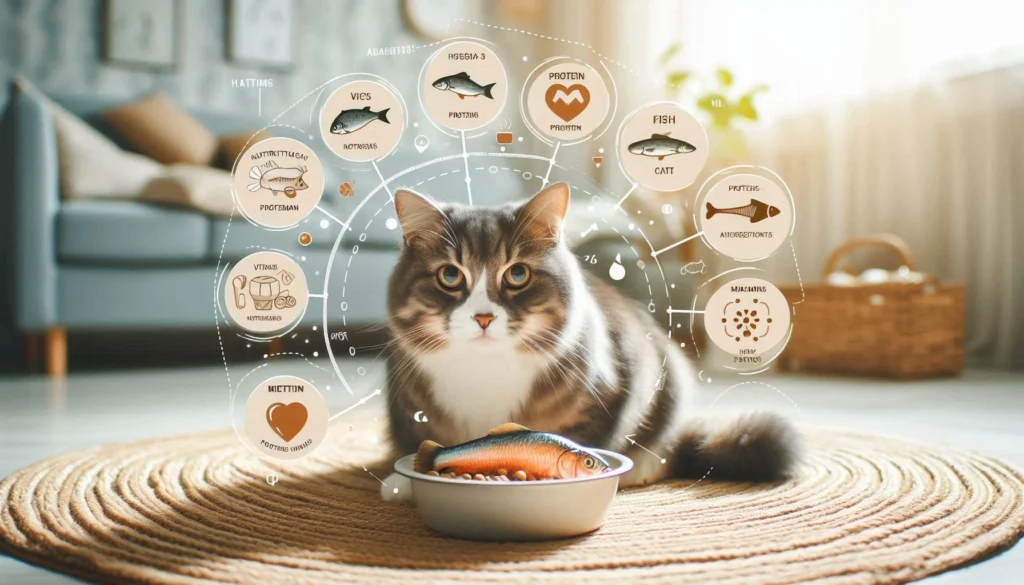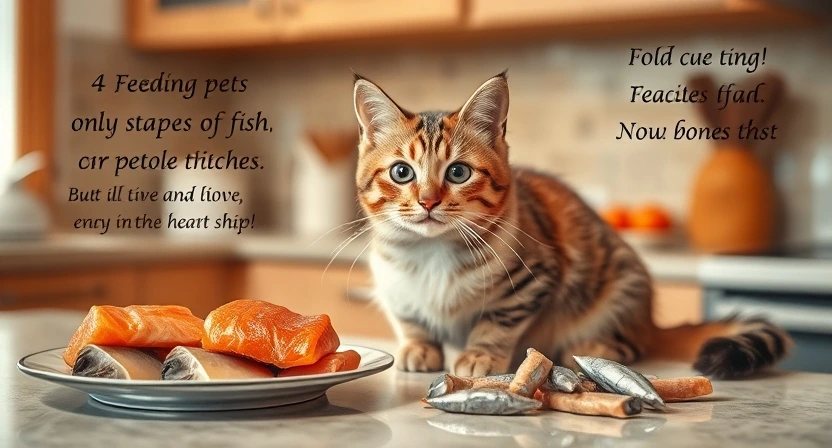Table of Contents
Cats have an instinctive but deep-rooted natural attraction towards fish. Cats are obligate carnivores and require dietary protein, and fishes are a source of proteins besides other necessary compounds like omega-3 fatty acids. These compounds are essential for a feline’s health in respect to skin and fur and brain functions. Its unique smell and flaky texture also make it more appealing for cats, fulfilling their sensory preferences.
Traditionally, cats probably had a preference for fish because they interact with man in association with water bodies. Usually, cat feeding by fishermen and villagers is in form of fish leftovers, which led to the cultural ties present to this day. Besides, fish contains high protein with an extremely alluring smell, making it a natural catalyst for stimulating a cat’s hunting urge.
Cat owners, for safety reasons, have to know the safe fish varieties that can be offered to the cats. Some varieties such as tuna should be fed only in small proportions as they contain mercury levels, while others are relatively safe and include salmon, sardines, among many others, so long as they are given at a time. Fish is quite indeed a nutritious and delectable treat that the cats can be fed, so long as it’s prepared safely and provided to them in regulated amounts.
Evolutionary Origins: Why Cats Love Fish
Cats are hardwired as hunters, and their instincts are formed through thousands of years of evolution in the wild. Obligate carnivores like cats needed high-protein diets from their prey, such as birds and small mammals. Although cats didn’t traditionally hunt fish, they could readily adapt to other sources of food because of their versatile diets. For some of the wild cats, fish was an accessory source of proteins, especially in the nearness of water-rich areas. This adaptability helped cats to be successful in regions where fish was easily available, paving the way for the current preferences of their diet.
Another aspect that may be contributing to this attraction could be the nutritional content of fish. Fish contains a unique blend of high-quality protein and omega-3 fatty acids, which is quite essential for felines. For instance, omega-3 supports brain development, enhances cognitive ability, and gives a cat a glossy coat. The nutrients provided by the consumption of fish must have served to enhance the health and wellness of cats, making their natural attraction even more strengthened.
Although house cats do not have to hunt for their food, the instincts remain very strong. Exposed to fish with its high-speed movements and lustrous scales, it will really provoke their natural curiosity and instinct to catch. Thus, even though the modern cats do not hunt fish, the smell and appearance can still trigger this instinctive reaction. It is why fish has remained one of the favorite food items.

Nutritional Requirements and Benefits of Fish in Cats
Fish is a rich nutrient source for cats and, as such, one of the most desirable treats for many cats. Because cats are obligate carnivores, their diets need to be composed of proteins, and fish provides just that. High protein intake will help the muscle health of the cat and provide the animal with energy for it to stay active and agile. The protein of fish is easily digested by the cat, thereby providing them with nutrients without causing any digestive stress.
Another high-value addition to fish is omega-3 fatty acids, DHA and EPA especially. Cats need these two for health. They keep skin healthy, reduce inflammation, and give a shiny, thick coat. For the cat affected with skin allergies and/or joint problems, omega-3 may be a good addition as it can calm irritation and reduce stiffness.
Fish also tends to have a different taste and smell that attract cats in great numbers because it uses senses related to smell and taste so much when deciding what food to eat. Fish offers a very potent and recognizable smell that most cats do not resist. It will thus be preferred as an accompaniment. Finally, the taste of fish often is quite distinctive from most other proteins and will represent a sensory experience for those cats.
It should be noted that even though fish is such an excellent addition to the diet of a cat, it must be provided in moderation. Too much consumption of fish can lead to various health issues, including nutritional imbalance and possible mercury poisoning. Therefore, for healthy balance, fish should be considered an occasional meal supplement for the diet of a cat without becoming overly dependent on it.
Sensory Attraction: Why Cats Find Fish Irresistible
For a cat to fish, there are smells, tastes, and sights involved. It is recognized that cats have an extremely highly developed sense of smell. Scientists estimate the cat’s sense of smell to be around 14 times more sensitive than that of humans. Fish have a pungent smell that stands out and grabs the attention of a cat from afar. The unique smell is unlike any other meat, making it appealing to cats.
Apart from the smell, fish has a very rich taste. There are specific amino acids and fats in fish that give a richer flavor, hence it is much more satisfying to cats compared to other proteins. Since cats do not have many taste buds like human beings, they find preference in food based on the richness of flavors and fats present in the food. The fish contains a flavor that is palatable to cats; therefore, it is regarded as a very tasty treat.
Another thing which might incite a cat’s predatory instincts is the attractiveness of a fish, especially while in motion. A swimming or flopping fish activates a cat’s instinct to stalk and capture prey, which accounts for many cats’ interests in fish tanks. Besides the smell and taste, these visual attractions make fish a sensory experience for cats, thus making it very attractive.
Relations and History: Fish and Cat-Human End
Cats have been traditionally associated with fish, an association that goes back thousands of years. Fishing villages flourished along the Nile River, and the ancient Egyptians were also known to have worshipped cats. Cats were useful in controlling rodents around water sources that protected the stores of fish. The humans may have fed the scraps of fish to these cats, thus forming the early association between cats and fish as a food source.
It spread into many different areas. That relationship continued because cats welcomed their presence in fishing villages and coastal towns, mainly around fisherfolk. Such arrangements reinforced the association with fish and made it into a dieting tradition. The tradition continues to the present time.
In folklore, fish is sometimes shown with cats as good-luck symbols, making the cultural bond even stronger. In the modern world, even today, fish appears on cat-themed products, toys, and treats. A historical connection between cats and fish adds a cultural element to their fascination with fish, blending instinctual and societal factors into a lasting preference.

Common Types of Fish Cats Enjoy and Safety Tips
Not all fish species are as safe or well-suited for felines. Fish is generally a pretty tasty snack, but some varieties will be far more safely selected and offer nutritional benefit with no risks associated. Some favorite fish for cats include salmon, sardines, and whitefish. They account for a large portion of the cat’s diet in terms of protein and omega-3 fatty acids.
Nonetheless, fish such as tuna can only be provided in little quantities. Tuna is highly rich in mercury-a chemical that leads to poisoning when a lot is assimilated into the body system. In addition, administering a lot of fish creates an imbalance diet for the cat, and eventually can bring nutritional deficiency in the long-term run.
For safe preparation, you must cook it thoroughly and do not add oils or seasonings that may harm the cats. Raw fish contains potential parasites or harmful bacteria; therefore, it’s avoided for feeding your cat. Smaller bones can pose choking hazards or cause problems while being digested in their stomachs.
However, when used appropriately, fish can be a great accompaniment to a cat’s diet. It becomes a special treat that cats can enjoy for its taste and smell without any consequences. A balanced diet always stays as the core of keeping a cat healthy, but fish can be added only in moderation.
Related Post
Popcorn & Cats: Safe Snack? Learn Now!
Protect Your Cats: Snake Plant Safety Tips






